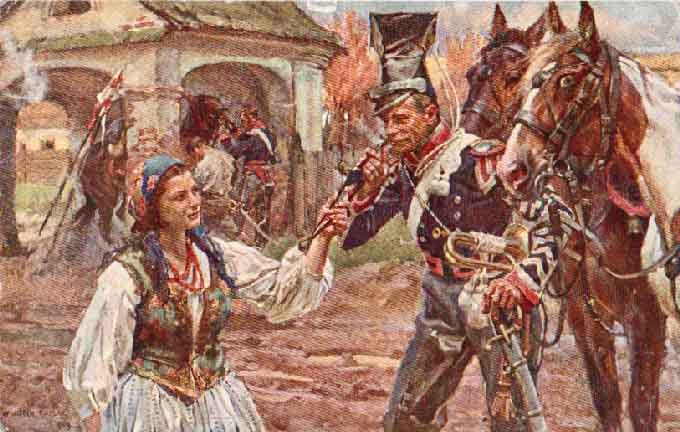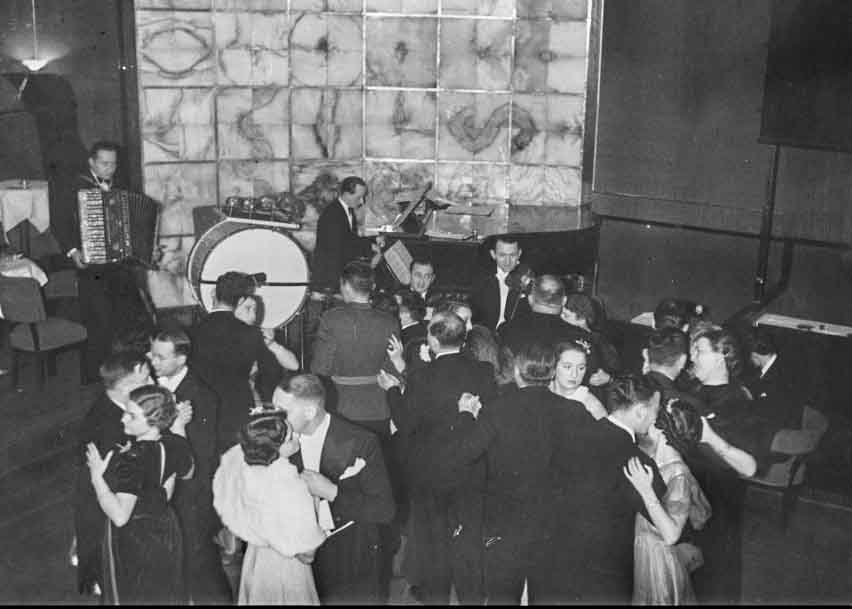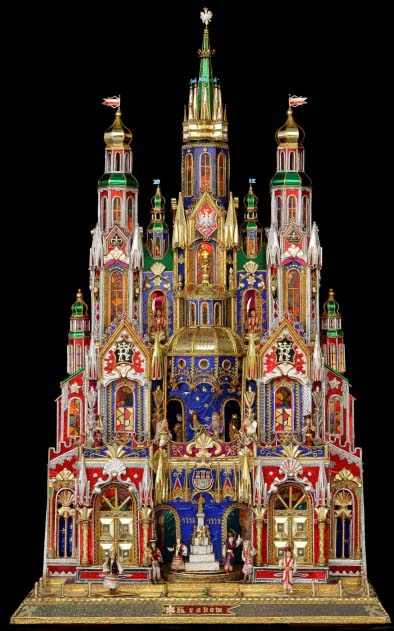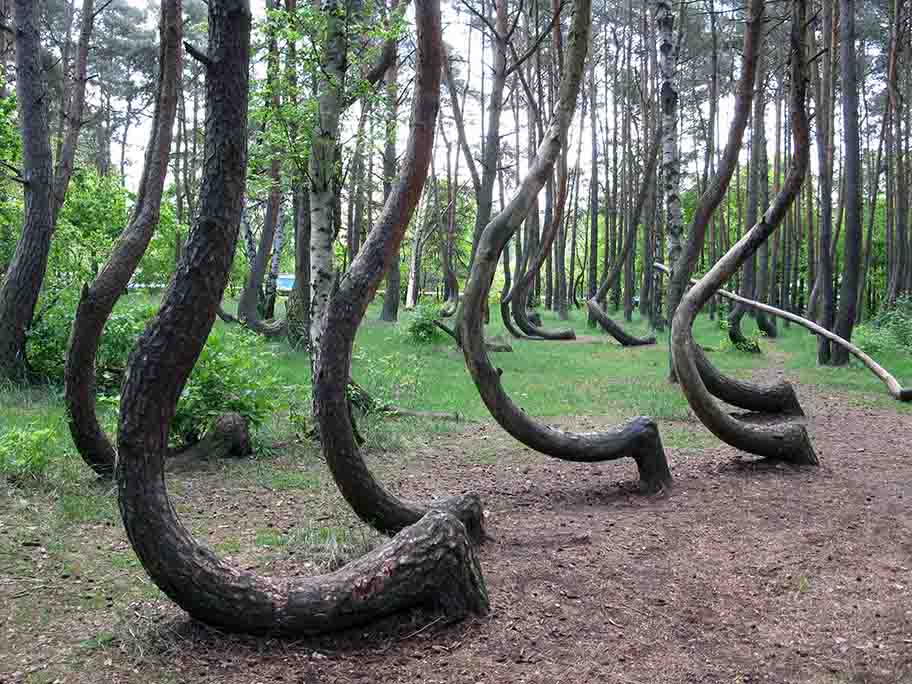The "Golden Train" is a famous story from a few years ago that reminded us of the German Nazis and their looted treasures from all over Europe. Apparently, it contained the inexhaustible riches of the inhabitants of Wrocław, which were to be taken away because of the Russians approaching Wrocław between November 1944 and the end of January 1945.
In the last year of World War II, stories were told by random witnesses what this legendary train would contain. Many rolls have been seen, most likely with valuable paintings, many chests and tiny boxes. And some of the crates were handled very delicately, which suggests that there was valuable porcelain there.
The train was about to leave...
The aforementioned train was to set off from the city of Wrocław towards Wałbrzych. However, you should know that for some unknown reason, it never reached Wałbrzych. In an interview with Mr. Jerzy Tomasz Surus, a historian from Warsaw, we learn that the Germans never did not mean to only carry the works of art that were on that train, but most of all, the secret archives about the then Soviet Union, which they wanted to remove from Poland. According to our interlocutor, the above-mentioned valuables and documents were to be taken from Wrocław to an unknown hideout, probably located near the Owl Mountains (Góry Sowie). As you can see, the train probably existed, and the act of loading large boxes onto it, seen by many witnesses... became an inspiration for numerous searches.

Tunnels in the Owl Mountains — Osówka Complex (Source: Wikipedia)
Many stories...
The stories of the "Golden Train" go back to the end of World War II. The German generals already knew then that the fate of the war was decided against them. It was then that the retreating Nazis from the previously occupied territories began the action of hiding the stolen valuables. Therefore, the "golden train" was to be one of the storage facilities where the Germans took the most valuable things from Wrocław.
The train's composition
It was supposed to consist of 12 cars, loaded with crates of gold and other valuables. The contents of the chests, apart from jewelry, were to encompass valuable bank deposits. Apparently, there were witnesses who saw the Germans carrying something in huge boxes to the Polizeipräsidium in Wrocław, from where the cargo was carried on to the railway ramp in Wrocław. According to the list mentioned by Polish witnesses, there were deposits hidden in 56 metal and wooden boxes with lids sealed with rubber. According to witnesses, the crates could weigh about 200 kilograms, as they were carried by 4 large men. According to the accounts of witnesses, the wooden boxes were painted with something thick and greasy, most probably in order to seal them against possible moisture.
A series of presumptions
According to the story and a number of presumptions, the train was supposed to reach Świebodzice, and from there continue to Wałbrzych. Apparently, during the journey towards Wałbrzych, the "golden train" was to be stopped and its German civil service was murdered and replaced by SS men. SS men, on the other hand, reportedly did not convoy the train mentioned above, but hired Poles for this undertaking, who were ordered to carry the treasures from the train to the pits dug in the vicinity of the Owl Mountains. These areas were to be the perfect place to hide the goods gathered by the Nazis. Later, Poles working with these boxes were then seen to be shot.
In the "Herman" mine
In many articles about the "Golden Train" you can read that these treasures, in turn, from the above-mentioned pits at the Sowie Mountains, were moved to the vicinity of the former German mine "Herman". At the end of the war, the mine was transformed into a German shelter. Supposedly, a possible temporary shelter complex for the leader of the Third Reich or his entourage was to be built in the mine tunnels. As we read in the testimonies of the witnesses from the Nuremberg trial, Goering, who brilliantly shone in the room, after having been asked a question about the aforementioned "Herman" mine, replied that these areas were German and he would not explain anything that was done there. He used to say "if we did something there... we did it in our home."
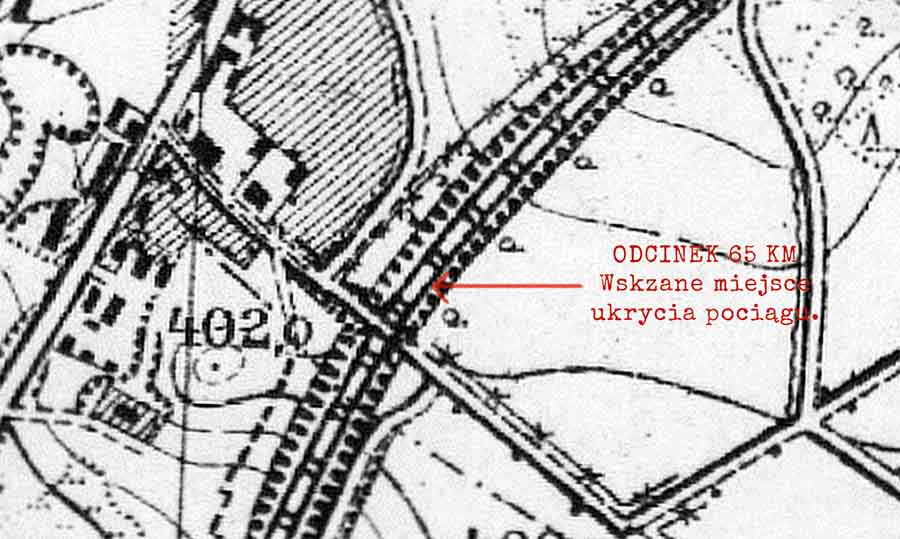
A German map with the place where the train is supposedly hidden (www. złoty pociąg.pl)
It was forbidden to leave the house
On May 5, 1945, the inhabitants of today's Wałbrzych were forbidden to leave their homes. The windows of their apartments were to be covered with black blinds, even during the day. According to a number of stories, it was then that the Nazis decided to transport the cars with the treasure to a designated place. Wałbrzych's "Golden Train," by analogy refers to the "Hungarian Golden Train". It left Budapest at the end of April 1945 and was found on May 11, 1945 by American units in the Taurian Tunnel near the Austrian Böcksken. It consisted of 24 cars loaded with valuables stolen by the Nazis from wealthy Hungarians who were transported to KL Auschwitz. There were chests filled with gold wedding rings, candlesticks, diamonds, and there were also over 1,200 paintings. During the travel, no one knows why, a part of the train disappeared somewhere.
Another story
According to some, the story of the "Golden Train" and its cargo was invented by Herbert Klose — a German who wanted to remove suspicions of subversive activity. The stories that there were underground tunnels in the Wałbrzych area appeared immediately after the war, as early as 1946. According to the accounts of the inhabitants of Wałbrzych, the places where the crates from the train were allegedly stored, were different each time according to various witnesses.

The famous 65th kilometer: the spot, where the alleged railway siding is supposed to be located (www.złoty pociąg.pl)
One of the first people who contributed to the search for the train was Tadeusz Słowikowski, a resident of Wałbrzych. According to his description, shortly after the war, a few Germans who remained in Wałbrzych were railway workers. As reported by Mr. Słowikowski, one of them found the entrance to a hidden but blocked tunnel. Fearing for his life, it was only on his deathbed that he gave information about the Wałbrzych tunnel to a friend named Schulz. The aforementioned Schulz shared this information with Tadeusz Słowikowski as a token of gratitude for saving his life during the war. Since then, Słowikowski started his own investigation looking for the "Golden Train".
The 70s of the last century
Major Stanisław Siorek, the commander of the 2nd Department of the Voivodship Internal Affairs Office, commanded the search for the train. According to Słowikowski's account, an officer of the Security Service ordered to bring a German map confiscated by the Wałbrzych commune, which was to show where the treasure train wagons were. According to Słowikowski's account, Major Siorek did not manage to find the treasure.
During his search, Słowikowski found a strange tunnel, as if covered with rubble on purpose. After reaching its interior, the man found another, smaller tunnel, also covered with rubble. After partial debris removal, the interior of the tunnels was empty. It looked like a place once used to store something with large dimensions...
The 80s and 90s
As part of the search for the "golden train", in 1982, in the vicinity of Lubiąż, Polish explorers found gold coins from 1354, with a total weight of 6 kilograms. Some of these coins were later sold illegally abroad.
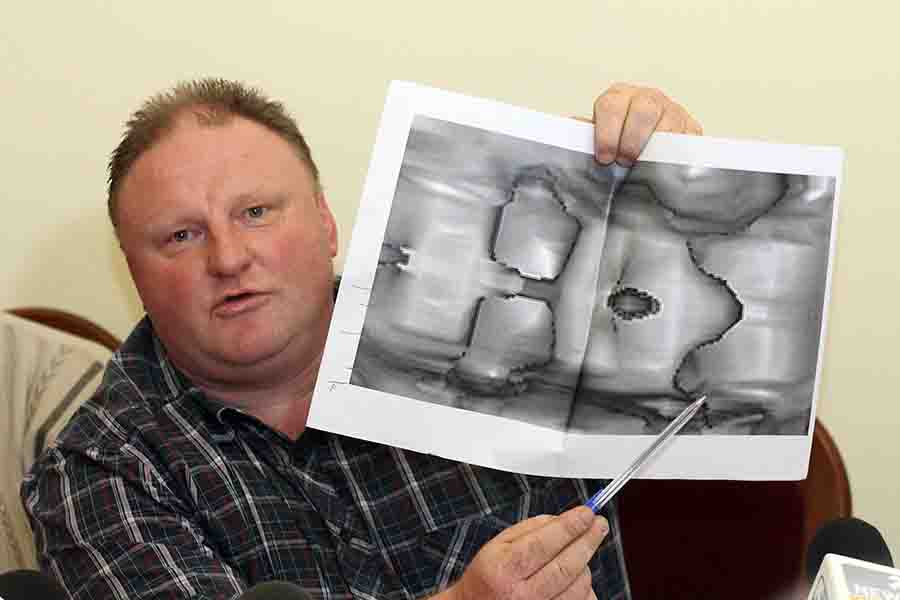
Piotr Koper, a well-known purveyor of the Golden Train, electrified the public with the information about the probable location where the alleged train may be found (www.złoty pociąg.pl)
In the 90s of the last century, Piotr Koper and Andreas Richter very precisely indicated to the then authorities of the city of Wałbrzych the place where the "Golden Train" was hidden, and of course they mentioned its possible contents. However, the train was not found during the searches at that time.
August 2015
The speech of the general conservator of monuments, Piotr Żuchowski in August 2015, interested not only the authorities of Wałbrzych and Wrocław. He judged that the train definitely existed and that it was an armored train made of and covered in several layers of thick steel.
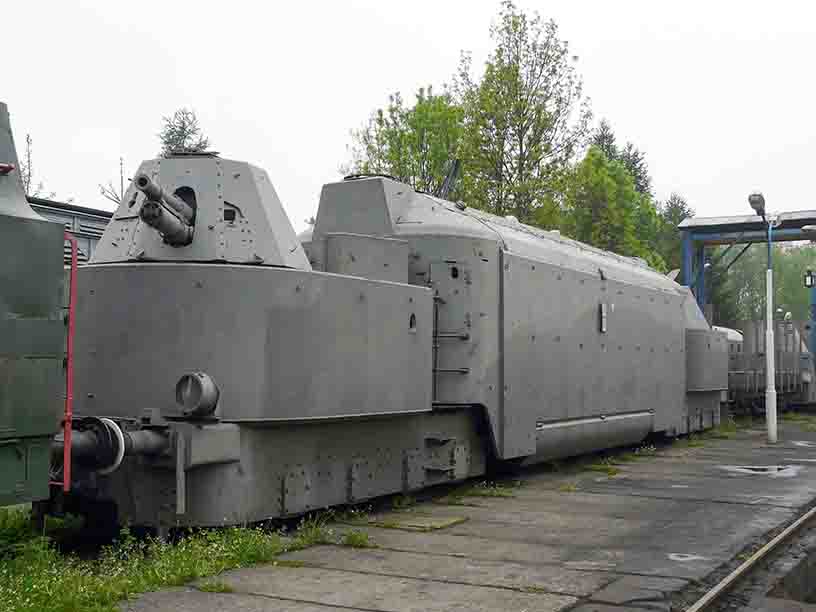
An armored train in the open-air museum in Chabówka (Source: Wikipedia)
In September 2015, the military services began exploring the area where the "golden train" was possibly to be located. But unfortunately this train was not found. According to professor Ireneusz Brudkiewicz, such a train certainly must have existed.
The treasures stolen by the Nazis did not have to be on the train all the time. It could possibly be transported to some place of which only the Germans knew well. The area of the Owl Mountains, Wrocław and Wałbrzych is the former territory of the German state. The Germans knew the topography of these areas very well. From the train, they could hide the whole treasure in a tunnel known to them, about the existence of which after the war Poles had no idea.
According to Mr. Irenaeus, the existence of the golden train is certainly not just a legend. This is certainly true, only the Germans, hiding it in their former home territory, knew well that no one but them would find it. Apparently, in Argentina, a huge chest with porcelain from the Polish magnate Lubomirski family was found in a German family who escaped there after the war. Perhaps this box is part of the Golden Train cargo.
The story of the golden train does not end there. There is an underground military complex under the Kamienna Góra hill in Lubań. Since 1945, no one has been in its warehouses. Golden Train hunters hope to find it there. Work began in 2021. All indications are that local tourism and the people living in these areas will benefit from it.
The Golden Train, or the search for the Amber Room, the secrets of the Owl Mountains, and the legends of underground cities or surrounding castles — all of this is to be discovered. We invite you to Poland.





